South Africa’s turbulent yet fascinating past comes alive through its historic cities, each telling unique stories of colonialism, struggle, and triumph. These cities in South Africa serve as living museums where ancient architecture, poignant memorials, and cultural heritage sites transport visitors through centuries of human experience. Furthermore, from Dutch colonial fortresses to apartheid museums, diamond mines to freedom monuments, these destinations offer profound insights into the nation’s complex journey toward democracy.
During my extensive travels across South Africa, I’ve witnessed how history permeates every corner of these remarkable urban centers. Moreover, walking through cobblestone streets, exploring underground tunnels, and standing in halls where pivotal moments unfolded, I’ve experienced firsthand how these cities in South Africa preserve and celebrate their heritage while embracing modernity.
Cape Town – The Mother City’s Colonial Legacy
Cape Town stands as South Africa’s oldest European settlement, where history unfolds at every turn. Additionally, the Mother City’s 350-year story begins with Dutch colonization and evolves through British rule, apartheid, and ultimate liberation.
The Castle of Good Hope: A Living Fortress
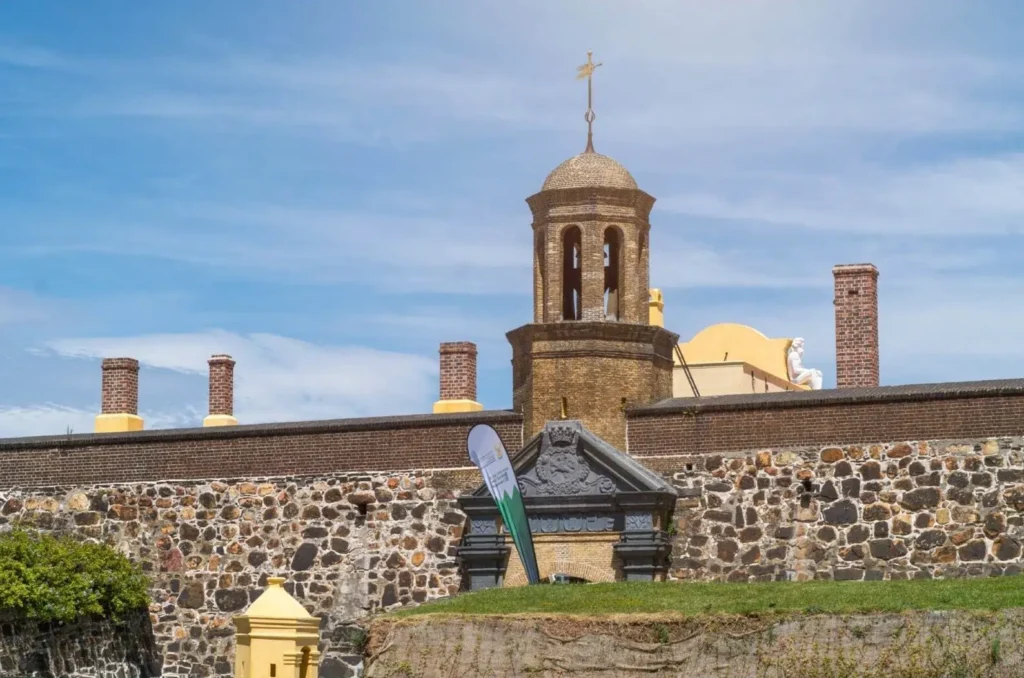
The Castle of Good Hope dominates Cape Town’s historical landscape. Built between 1666 and 1679, this star-shaped fortress represents the oldest surviving colonial building in South Africa. Consequently, during my visit, I participated in the daily Key Ceremony at 10 a.m., witnessing a tradition dating back three centuries. Furthermore, the castle’s dungeons, old kitchens, and well-preserved rooms housed important colonial figures, while its bastions named after Dutch nobility tell stories of European ambition.
Robben Island: A Testament to Resilience
Robben Island creates perhaps the most emotionally powerful historical experience among cities in South Africa. This UNESCO World Heritage Site served as Nelson Mandela’s prison for 18 of his 27-year sentence. Moreover, the ferry journey across Table Bay prepares visitors for an intensely moving encounter with apartheid’s harsh realities. Subsequently, former political prisoners guide tours, sharing personal accounts of life under the regime’s oppressive conditions.
Bo-Kaap and District Six: Stories of Community
The Bo-Kaap neighborhood showcases Cape Town’s multicultural heritage through its colorful houses and cobbled streets. Similarly, this Cape Malay area escaped apartheid-era destruction, preserving Islamic culture and community traditions. Additionally, the Bo-Kaap Museum honors local heritage dating back to slavery times, offering insights into the people who shaped this vibrant district.
Meanwhile, District Six Museum provides another poignant reminder of apartheid’s devastating impact. Located in a former Methodist church, this museum commemorates the 60,000 residents forcibly removed from their homes in 1966. Therefore, interactive exhibits and personal testimonies reveal how apartheid systematically destroyed thriving communities.
Table Mountain: Nature Meets History
Table Mountain National Park adds natural wonder to Cape Town’s historical narrative. This 540-million-year-old geological formation witnessed centuries of human activity, from indigenous Khoi communities to European colonizers. Consequently, the cable car journey offers spectacular views while contemplating the mountain’s role in maritime navigation and colonial expansion.
Johannesburg – From Gold Rush to Freedom
Johannesburg transformed from a mining camp into Africa’s largest city within decades, embodying rapid industrialization and social transformation. Furthermore, the City of Gold’s history encompasses both economic prosperity and human suffering under apartheid rule.
The Apartheid Museum: Confronting the Past
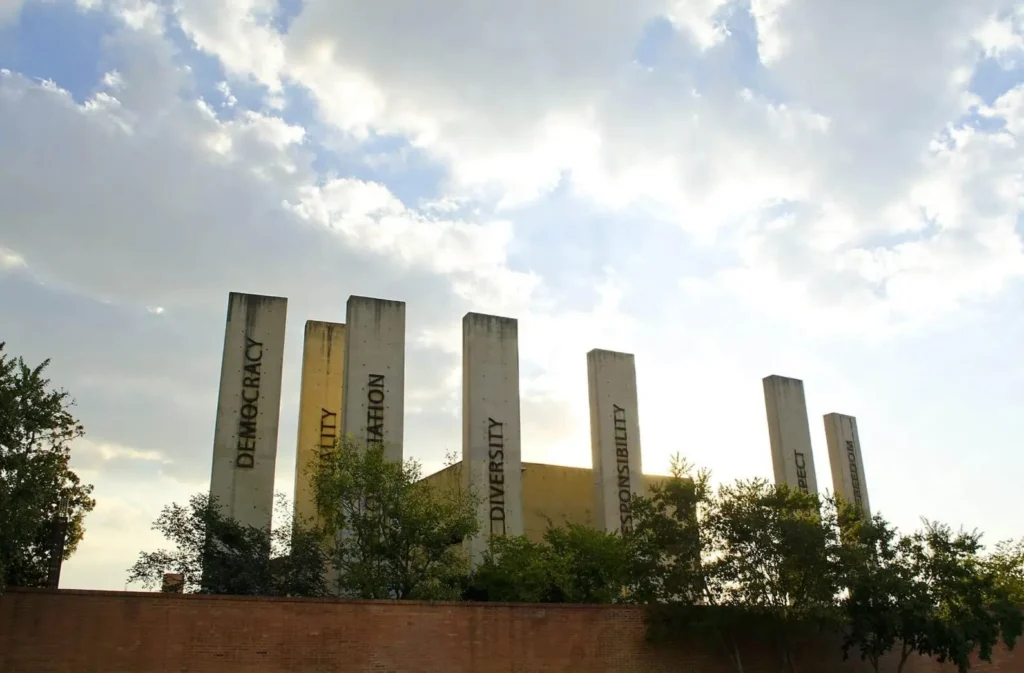
The Apartheid Museum delivers South Africa’s most comprehensive examination of institutionalized racism. Through film, photographs, and personal accounts, this world-class facility traces apartheid’s rise and fall from 1948 to 1994. Additionally, interactive exhibits separate visitors upon entry, recreating the racial classification system that divided South African society. Subsequently, my two-hour journey through the museum left me profoundly moved by the resilience of those who fought for freedom.
Soweto: The Heart of Resistance
Soweto township represents the heart of anti-apartheid resistance among cities in South Africa. Home to over one million people, this sprawling community produced numerous freedom fighters and cultural icons. Notably, Vilakazi Street holds particular significance as both Nelson Mandela and Archbishop Desmond Tutu’s former home. Moreover, the Hector Pieterson Memorial commemorates the 1976 student uprising, when police opened fire on peaceful protesters, sparking international outrage.
Constitution Hill: From Prison to Democracy
Constitution Hill demonstrates how former sites of oppression became symbols of democracy. This refurbished prison once held political activists including Gandhi and Mandela. Today, it houses the Constitutional Court, South Africa’s highest judicial authority. Therefore, the juxtaposition of old prison cells with modern courtrooms powerfully illustrates the country’s transition from authoritarianism to constitutional democracy.
Museum Africa and Gold Heritage
Museum Africa occupies an entire city block in downtown Johannesburg, showcasing the continent’s rich cultural heritage. Originally established in 1935, this institution houses 850,000 objects including African artifacts, historical photographs, and liberation struggle memorabilia. Similarly, the Treason Trial exhibition features portraits of freedom fighters who faced charges but ultimately achieved victory.
Meanwhile, Gold Reef City provides insight into Johannesburg’s mining origins. This theme park built around an actual gold mine offers underground tours revealing the dangerous conditions miners endured. Consequently, the juxtaposition of entertainment with historical education creates a unique perspective on the gold rush that created modern Johannesburg.
Stellenbosch – Where Wine Meets History
Stellenbosch combines South Africa’s viticultural heritage with stunning Cape Dutch architecture, creating one of the most picturesque cities in South Africa. Established in 1679, this university town preserves three centuries of winemaking tradition alongside colonial history.
Architectural Heritage Through the Ages

The town’s architectural heritage showcases three distinct periods of occupation. Cape Dutch buildings feature characteristic whitewashed walls, ornate gables, and thatched roofs dating to the late 1600s. Meanwhile, Georgian and Victorian structures reflect British colonial influence, while modern developments demonstrate contemporary South African design. Subsequently, oak-lined streets earned Stellenbosch the nickname “Eikestad” (Town of Oaks), a designation still used today.
French Huguenot Legacy in Winemaking
French Huguenots planted the region’s first vines in the 1690s, fleeing religious persecution in Europe. These Protestant settlers established winemaking techniques that transformed South Africa’s agricultural landscape. Today, Stellenbosch produces nearly one-fifth of all South African wines, maintaining its position as the country’s premier viticultural region.
Furthermore, Muratie Wine Farm houses the region’s oldest building, constructed in 1689. This historic estate exemplifies how cities in South Africa preserve their heritage through working farms that continue traditional practices. Moreover, walking through Muratie’s cellars, I experienced the continuity between past and present that defines Stellenbosch’s character.
Educational Excellence and Wine Tourism
The University of Stellenbosch, founded in 1918, continues the town’s educational legacy begun in 1859 with a theological seminary. This internationally recognized institution trains South Africa’s future winemakers while conducting research into new varieties and cultivation techniques. Additionally, the campus architecture blends seamlessly with the town’s historic character.
Stellenbosch became South Africa’s first organized wine route in 1971, pioneering the concept of wine tourism. More than 150 wineries now open their cellars to visitors, offering tastings and tours that combine viticultural education with historical storytelling. Consequently, this innovation established Stellenbosch as a model for wine regions worldwide.
Pretoria – The Administrative Heart
Pretoria serves as South Africa’s executive capital, where government buildings and monuments chronicle the nation’s political evolution. Founded in 1855 by Voortrekker leader Marthinus Pretorius, this city witnessed crucial moments in South African history from Boer republics through apartheid to democracy.
The Voortrekker Monument: Controversial Heritage
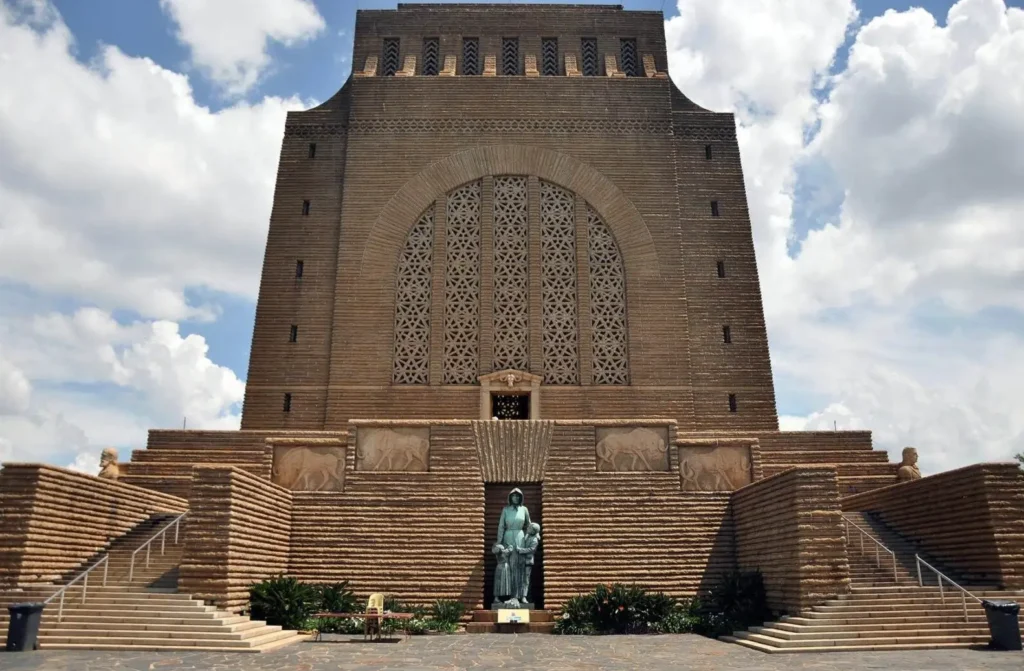
The Voortrekker Monument dominates Pretoria’s skyline, commemorating Afrikaner pioneers who left the Cape Colony between 1835 and 1854. This 40-meter granite structure houses the world’s longest marble frieze depicting scenes from the Great Trek. Subsequently, declared a National Heritage Site in 2011, the monument remains controversial yet historically significant among cities in South Africa.
Freedom Park: Alternative Narratives
Freedom Park offers a contrasting perspective on South African history, honoring all who died in liberation struggles. This memorial and heritage site includes a Wall of Names, museum, and various monuments creating space for reflection and remembrance. Therefore, the juxtaposition with the nearby Voortrekker Monument symbolizes how modern South Africa acknowledges multiple historical narratives.
Government Architecture and Historical Sites
The Union Buildings serve as the presidency’s official seat, featuring clock chimes identical to Big Ben. Completed in 1913, this imposing structure overlooks Pretoria from the city’s highest point. Meanwhile, Nelson Mandela’s statue stands in the gardens, while laws prohibit buildings from obstructing views between the Union Buildings and Voortrekker Monument.
Similarly, Paul Kruger House Museum preserves the former residence of the South African Republic’s last president. This Victorian-style home offers insights into late 19th-century Afrikaner leadership before British occupation. Furthermore, personal artifacts and period furnishings create intimate portraits of this influential historical figure.
Additionally, Church Square anchors Pretoria’s historic center, surrounded by significant buildings including the Old Raadsaal and Palace of Justice. This central plaza witnessed numerous historical events and remains a gathering place where past and present intersect. Moreover, the square’s architecture spans multiple periods, reflecting Pretoria’s evolution from frontier town to national capital.
Finally, Melrose House played a crucial role during the Second Boer War, serving as British commander Lord Roberts’ residence. Today, this elegant Victorian mansion functions as a museum showcasing period furnishings and artifacts. Notably, the Peace of Vereeniging ending the Boer War was signed here in 1902, making it one of the most historically significant cities in South Africa.
Kimberley – Diamond Capital of the World
Kimberley emerged from South Africa’s diamond rush beginning in 1871, transforming from farmland into a bustling mining center within months. This Northern Cape city preserves the heritage of diamond discovery that reshaped southern Africa’s economy and political landscape.
The Big Hole: Monument to Human Ambition
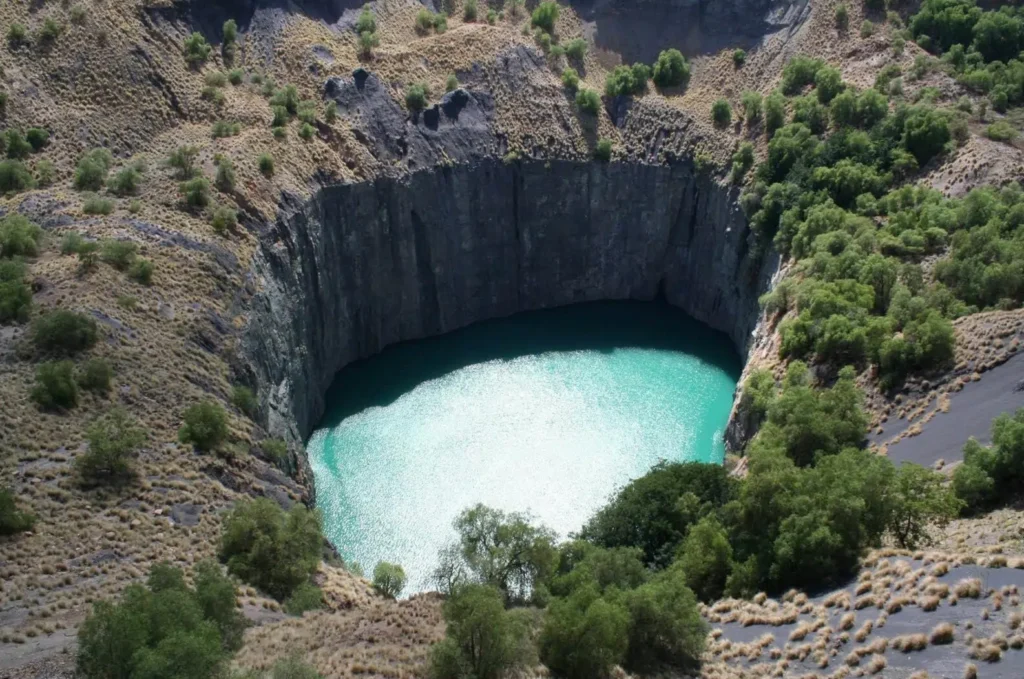
The Big Hole represents human ambition on an extraordinary scale. Originally dug 240 meters deep by hand, this massive excavation produced 2,722 kilograms of diamonds between 1871 and 1914. Furthermore, fifty thousand miners using primitive tools extracted over 22 million tons of rock, creating what was once considered the largest hand-dug hole in the world.
De Beers and the Diamond Empire
Cecil Rhodes and Charles Rudd established De Beers Consolidated Mines in 1888, creating the diamond industry’s most influential company. This corporate giant continues dominating global diamond production, controlling 70% of South African mines and 40% of worldwide rough diamond output. Consequently, the company’s Kimberley origins demonstrate how cities in South Africa birthed multinational corporations that shaped global industries.
Museums and Mining Heritage
The McGregor Museum complex preserves Kimberley’s diamond rush heritage through multiple historic buildings and exhibits. Housed in a former sanatorium, this institution chronicles the social, cultural, and economic impacts of diamond discovery. Additionally, interactive displays reveal how mining transformed South African society while creating vast wealth disparities.
Similarly, Kimberley’s Mine Museum offers underground experiences in restored mining shafts and tunnels. Visitors descend into authentic workings where miners once labored under dangerous conditions. Moreover, the museum’s vintage tram system connects various sites, providing atmospheric transportation through the historic mining district.
Colonial Social Life and Modern Innovation
The Kimberley Club maintains its colonial-era atmosphere, where diamond magnates once conducted business over brandy and cigars. This exclusive institution preserves the social environment of mining boom times, though it now welcomes visitors interested in diamond rush history.
Meanwhile, modern Kimberley focuses on processing historical tailings using advanced technology to recover previously undetectable diamonds. This innovative approach to mining heritage demonstrates how cities in South Africa adapt historical industries for contemporary purposes while maintaining their cultural identity.
Planning Your Historical Journey
Exploring these historic cities in South Africa requires careful planning to maximize educational and cultural experiences. Each destination offers unique insights into different aspects of South African history, from colonial encounters to liberation struggles.
Cape Town Itinerary
Cape Town serves as an ideal starting point, combining multiple historical periods within a compact area. Budget three to four days to properly explore the Castle of Good Hope, Robben Island, Bo-Kaap, and District Six Museum. Furthermore, book Robben Island tours well in advance, as this popular attraction often sells out during peak seasons.
Johannesburg and Soweto
Johannesburg demands at least two full days to experience the Apartheid Museum and Soweto township thoroughly. Consider guided tours for Soweto, as local guides provide invaluable context and ensure visitor safety. Additionally, the city’s museums concentrate in specific areas, making efficient itinerary planning essential.
Wine Country and Government Centers
Stellenbosch works perfectly as a day trip from Cape Town or a leisurely overnight stay. Wine estate visits combine historical education with culinary experiences, though designated drivers are essential. Moreover, the town’s compact size allows walking exploration of architectural heritage sites.
Meanwhile, Pretoria requires one full day to visit major monuments and museums. The city’s government buildings may restrict access during official functions, so check schedules in advance. Subsequently, combined visits with Johannesburg make geographical sense given the short distance between cities.
Remote Diamond Heritage
Kimberley represents South Africa’s most remote historical destination, requiring dedicated travel time. Plan overnight stays to fully appreciate diamond rush heritage and museum collections. Furthermore, the city’s isolation contributed to its historical significance but makes casual visits challenging.
For international visitors, South Africa Tourism provides comprehensive planning resources and current travel information. Additionally, local tourism offices in each city offer detailed maps, tour bookings, and accommodation recommendations tailored to historical interests.
Internal linking opportunities exist for readers interested in African heritage travel or colonial architecture tours, expanding their South African exploration beyond these five primary destinations.
Conclusion
These five cities in South Africa offer unparalleled opportunities to experience history through preserved architecture, world-class museums, and living communities that maintain cultural traditions. From Cape Town’s colonial fortresses to Kimberley’s diamond mines, each destination provides unique perspectives on the forces that shaped modern South Africa.
Moreover, the country’s complex history encompasses indigenous societies, European colonization, industrialization, apartheid, and democratic transformation. These cities in South Africa serve as classrooms where visitors gain deep appreciation for human resilience, cultural diversity, and the ongoing struggle for social justice.
Furthermore, historical tourism in South Africa extends beyond passive observation to active engagement with difficult subjects including slavery, racial oppression, and economic exploitation. These experiences challenge visitors to confront uncomfortable truths while celebrating the triumph of human dignity over systemic injustice.
Ready to explore South African history? Start planning your journey today by researching accommodation options, booking tours in advance, and preparing for transformative experiences that will deepen your understanding of this remarkable nation. These cities in South Africa await your discovery, offering lessons that resonate far beyond their borders in our interconnected world.
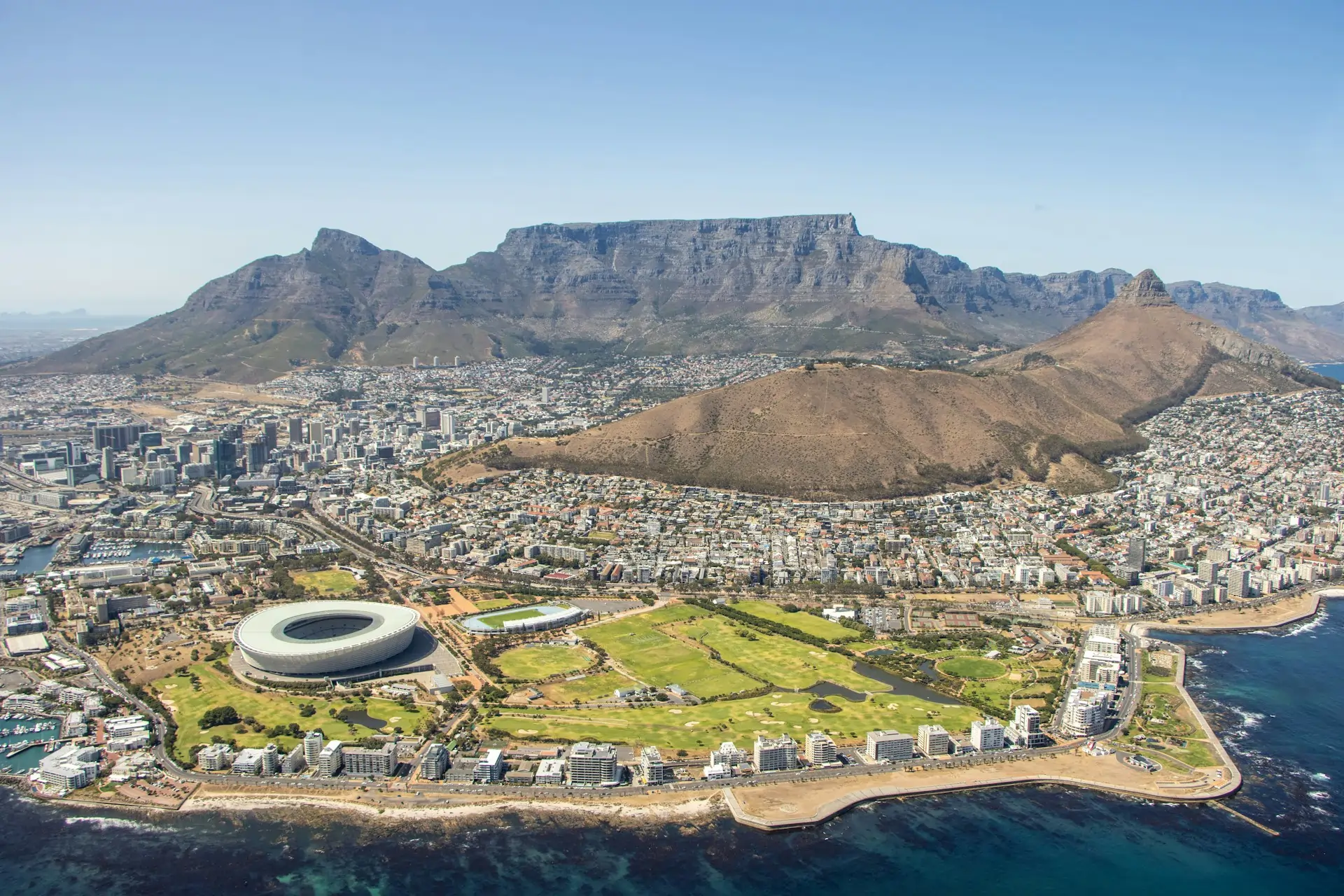
1 thought on “Top 5 Cities in South Africa Where History Comes Alive”